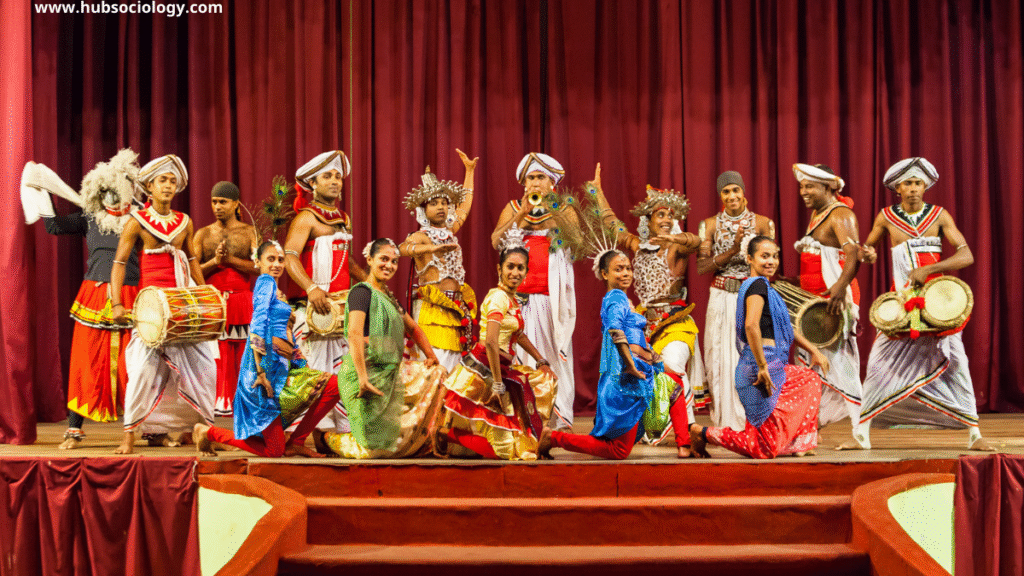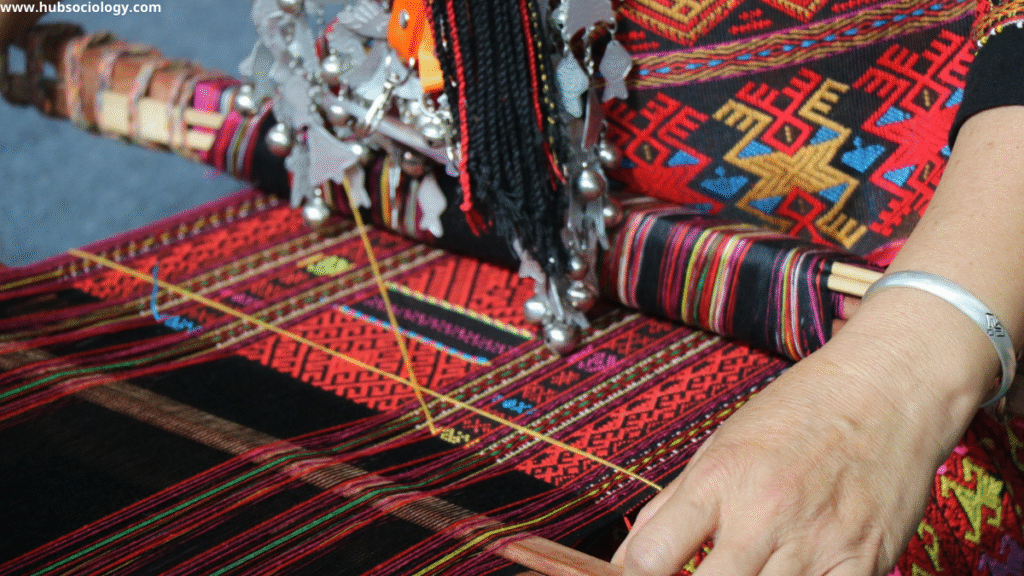Culture is one of the most fundamental concepts in sociology, encompassing the ideas, values, practices, and material expressions through which human beings give meaning to their collective existence. While society represents the network of social relationships, culture constitutes the symbolic and material framework that gives coherence to those relationships. To understand culture, sociologists not only examine its meaning but also analyze its contents—the elements and dimensions that form the fabric of cultural life. The study of cultural contents helps us grasp how individuals and groups interact, how social norms are maintained, and how societies evolve over time.
This article explores the meaning of culture contents, their sociological significance, and their various categories, while also analyzing their role in shaping social behavior, identity, and change.

Understanding Culture Contents
The phrase “culture contents” refers to the various components that make up culture. These contents embody both the intangible and tangible aspects of human life. They include language, beliefs, values, symbols, knowledge, traditions, customs, laws, moral systems, technologies, and art. Together, these elements provide the blueprint for how members of a society think, feel, and act.
From a sociological perspective, culture contents are not merely abstract ideas but serve as tools of social organization and cohesion. They enable communication, foster collective identity, guide moral behavior, and provide continuity across generations.
The Two Dimensions of Culture Contents
Cultural contents can broadly be divided into two dimensions:
1. Material Culture
Material culture consists of the physical and tangible objects created, used, and valued by a society. Examples include tools, buildings, clothing, artwork, and technology. These objects are not just functional but also symbolic, reflecting the level of technological advancement and the cultural values of the society. For instance, a smartphone is not only a communication device but also a symbol of modern connectivity, globalized identity, and social status.
Material cultural contents demonstrate how societies adapt to their environments and how they innovate to meet human needs. They also reveal cultural diversity—what is sacred in one society may be utilitarian in another.

2. Non-Material Culture
Non-material culture includes the intangible aspects of culture, such as beliefs, values, customs, norms, traditions, symbols, language, and knowledge systems. These elements are more difficult to observe directly but are crucial in regulating social life. For example, the idea of democracy is not material, yet it structures political systems and influences behavior worldwide.
Non-material culture provides meaning to material culture. A book (material) becomes significant because of the language, ideas, and values (non-material) it carries.
Major Components of Culture Contents
Sociologists often categorize culture contents into distinct but interconnected components. The following are some of the key elements:
1. Language
Language is the primary medium through which culture is transmitted. It allows communication, the preservation of traditions, and the transfer of knowledge across generations. Sociologically, language is not just a tool but a social institution that shapes perception and identity. For example, different languages encode different worldviews—terms used in one culture may have no equivalent in another, reflecting unique cultural experiences.
2. Symbols
Symbols are objects, gestures, or signs that carry specific meanings recognized by members of a society. A national flag, for instance, represents unity and identity. Symbols are central to culture contents because they allow abstract ideas to be shared collectively.
3. Values
Values represent the shared ideas of what is good, desirable, and worthy in society. They serve as guiding principles for behavior and social interaction. For example, honesty, respect for elders, or pursuit of individual freedom are cultural values. These vary across societies and are subject to change over time.
4. Norms
Norms are social rules and expectations that guide behavior. They can be formal, such as laws, or informal, such as customs. Norms are essential for maintaining social order. For instance, in many cultures, shaking hands symbolizes greeting, while in others bowing may serve the same purpose.
5. Beliefs
Beliefs are convictions or assumptions about the world, often tied to religion, science, or tradition. They influence how people interpret events and how they behave. For instance, belief in karma shapes social interactions in South Asian societies, while belief in scientific rationality influences Western worldviews.
6. Knowledge and Education
Knowledge, whether scientific, historical, or cultural, is an important content of culture. Education as a social institution ensures the transfer of knowledge and cultural traditions. It equips individuals to participate effectively in social and economic life.
7. Customs and Traditions
Customs refer to established practices in daily life, while traditions are practices passed down from generation to generation. Both strengthen group solidarity and cultural identity. For example, festivals like Diwali in India or Thanksgiving in the USA embody rich cultural contents.
8. Art and Aesthetics
Artistic expressions—literature, music, dance, visual art, and architecture—reflect cultural creativity and provide insight into a society’s values and emotions. They are also vehicles for resistance and social change.
9. Religion and Morality
Religion is a major cultural content that influences moral codes, rituals, and worldviews. It provides meaning to existence, binds communities, and often legitimizes social institutions. Morality, whether rooted in religion or secular philosophy, guides ethical conduct in society.

Sociological Importance of Culture Contents
- Social Integration: Cultural contents act as glue that binds people together, creating a sense of belonging and shared identity.
- Continuity and Change: They preserve traditions but also adapt to new circumstances, ensuring both stability and dynamism in social life.
- Regulation of Behavior: Norms, values, and beliefs regulate how individuals act, thereby reducing conflict and promoting cooperation.
- Identity Formation: Language, religion, art, and traditions shape personal and group identities, helping individuals locate themselves in the social world.
- Conflict and Diversity: Cultural contents can also be sources of division. Different values, beliefs, or symbols may clash, leading to cultural conflicts or struggles for recognition.
- Globalization and Hybridization: In the modern era, cultural contents increasingly cross boundaries, blending into hybrid forms. Fast food, Bollywood films, or K-pop illustrate how local and global contents interact.
Culture Contents and Social Change
Cultural contents are dynamic. With globalization, technology, and social movements, cultural elements constantly undergo transformation. For instance:
- Technology reshapes material culture (digital platforms, AI tools) and non-material culture (ideas of privacy, communication norms).
- Social Movements challenge existing cultural contents—such as gender roles or racial stereotypes—and push for more inclusive values.
- Globalization creates cultural diffusion, where ideas and practices spread across societies, while also giving rise to cultural resistance to preserve local traditions.
This dynamism highlights that cultural contents are not static relics but living, evolving elements of human life.
Conclusion on Culture Contents
Culture contents, encompassing both material and non-material aspects, represent the essence of human social existence. They provide meaning, continuity, and order, while also enabling creativity, resistance, and change. By studying these contents, sociologists gain insight into the ways societies maintain cohesion, how identities are formed, and how change unfolds in response to internal and external forces.
Ultimately, the richness of cultural contents demonstrates the complexity of human life. Every object, word, ritual, or value carries deeper social meanings, reminding us that culture is not just something we inherit but also something we continuously create and recreate.
Do you like this this Article ? You Can follow as on :-
Facebook – https://www.facebook.com/hubsociology
Whatsapp Channel – https://whatsapp.com/channel/0029Vb6D8vGKWEKpJpu5QP0O
Gmail – hubsociology@gmail.com
Exam-style questions on Culture Contents
5 Marks Questions
- Define culture contents in sociology.
- Distinguish between material and non-material culture with one example each.
- How does language function as a cultural content?
- Write two sociological functions of cultural symbols.
- Mention two examples of how globalization affects cultural contents.
10 Marks Questions
- Explain the role of values and norms as contents of culture.
- Discuss the importance of customs and traditions in maintaining social solidarity.
- How do beliefs and knowledge shape social behavior? Give sociological examples.
- “Cultural contents regulate social life.” Elaborate with examples.
- Examine the role of art and aesthetics as cultural contents in society.
15 Marks Questions
- Analyze the distinction between material and non-material culture and their interrelationship in society.
- Critically examine the sociological significance of cultural contents in shaping identity and social cohesion.
- Discuss how cultural contents are both sources of integration and conflict in society.
- Evaluate the impact of globalization and technology on cultural contents with suitable examples.
- “Cultural contents are dynamic, not static.” Discuss this statement with reference to social change.
